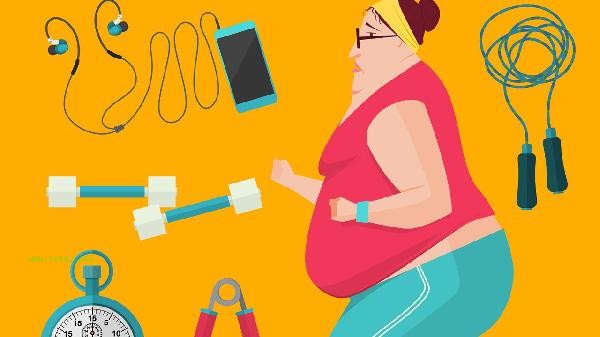Persisting in exercise for weight loss requires a combination of goal setting, habit cultivation, and scientific methods, mainly including clarifying goals, selecting appropriate exercise, establishing supervision mechanisms, adjusting exercise plans, and maintaining a positive attitude.

1. Clear Goals
Set specific quantifiable weight loss goals, such as losing 0.5 kilograms per week or reducing waist circumference by 2 centimeters per month. Break down big goals into small ones and give yourself non food rewards for completing each stage. Goals should be in line with actual physical fitness and health conditions, avoiding feelings of frustration caused by excessively high goals. Record changes in weight and circumference, and provide intuitive feedback on progress through data.
2. Choose appropriate exercise
Based on physical fitness, choose a combination of aerobic and strength exercises, such as brisk walking combined with squats, swimming combined with elastic band training. Prioritize choosing sports that interest you, such as dance, ball games, and other fun sports that are easier to persist in. At the beginning, exercise for 30-40 minutes each time, with the intensity controlled at a slightly sweaty but normal speaking level, gradually increasing the duration and intensity after adaptation.
3. Establish a supervision mechanism
Join the sports community or find weight loss partners to supervise each other, and form external constraints through social media check-in. Use a sports wristband to record daily steps and calories burned, and set up a reminder function for completion. Book private or group courses and improve execution through prepaid fees and fixed time arrangements. Regularly report progress to family members and receive emotional support.

4. Adjust exercise plan
Change some exercise content every 2-3 weeks, such as changing slow jogging to interval running, to avoid a decrease in effectiveness after the body adapts. Flexible arrangements can be made according to the pace of work and life, and 15 minutes of HIIT can be used instead of long-term exercise on overtime days. Increase the proportion of resistance training during the platform period, or try new activities such as swimming and rock climbing to stimulate muscle groups. Adjust the menstrual cycle to low-intensity exercises such as yoga and walking.
5. Maintain a positive attitude
Accepting weight fluctuations is a normal phenomenon, focusing on body fat percentage rather than just weight numbers. Timely supplement protein and water after exercise to relieve fatigue. Record the additional benefits such as improved sleep and increased energy brought by exercise. Don't blame yourself for occasional interruptions, make up for it with the next exercise. Enhance the sense of ceremony and sustained motivation through sportswear, music playlists, and other means.

Exercise for weight loss requires long-term persistence to achieve stable results. It is recommended to integrate exercise into daily life, such as brisk walking during commuting, stretching during lunch breaks, etc. Pay attention to warm-up and relaxation before and after exercise to avoid injury affecting the plan. Ensure protein intake in diet to aid muscle repair, control refined carbohydrates but avoid excessive dieting. When encountering bottlenecks, professional coaches can be consulted to adjust the plan, and regular physical examinations can be conducted to monitor changes in physical indicators. Maintain patience, it usually takes 3-6 months for the body to adapt to new metabolic patterns.






Comments (0)
Leave a Comment
No comments yet
Be the first to share your thoughts!